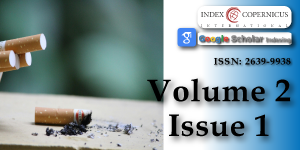Factors affecting physical activity of recuperating alcoholics in Asumbi-Homabay rehabiliation center, Kenya
Main Article Content
Abstract
Background: Alcoholism is a widespread problem in Kenya and is associated with severe impacts on health and quality of life of the individual. Physical activity is an affordable and sustainable adjunct treatment option for recuperating alcoholics; however its’ rarely used in rehabilitation of alcoholics in Kenya.
Objective: This qualitative study sought to elicit facilitators and barriers that influence the practice of physical activity amongst recuperating alcoholics under rehabilitation.
Methods: A focus group guide was utilized to gather views and perceptions of 15 alcoholics and 5 health professionals through focus group discussions. Constant comparative approach was used to analyze verbatim transcripts obtained from in-depth interviews. This analysis entailed three stages including open, axial and selective coding.
Results: Recuperating alcoholics’ recognized various forms of physical activity to promote mental and physical health during their rehabilitation. Health professionals and significant others considerably supported the recuperating alcoholics to practice physical activity however physical activity facilities and facilitation was lacking in Asumbi rehabilitation center.
Conclusions: The rehabilitation centres should have physical activity experts and facilities that can offer individualized physical activity services and support needed by the recuperating alcoholics.
Article Details
Copyright (c) 2018 Mutuli LA, et al.

This work is licensed under a Creative Commons Attribution 4.0 International License.
Sinclair J, Chick J, Sørensen P, Kiefer F, Batel P, et al. Can Alcohol Dependent Patients Adhere to An ‘as Needed’ Medication Regimen? European Addict Research. 2014; 20: 209–217. Ref.: https://goo.gl/eTvVZE
Sari S, Bilberg. R, Kurt J, Søgaard-Nielsen A, Nielsen B, et al. Physical Exercise as a Supplement to Outpatient Treatment of Alcohol use Disorders a Randomized Controlled Trial. BMC Psychology. 2013; 1:23. Ref.: https://goo.gl/AUESXX
Chesang RK. Drug Abuse among the Youth in Kenya. International Journal of Scientific & Technology Research. 2013; 2; 2277-8616. Ref.: https://goo.gl/gF54ja
Kuria MW. Factors Associated with Relapse and Remission of Alcohol Dependent persons after Community Based Treatment. Open Journal of Psychiatry. 2013; 3: 264-272. Ref.: https://goo.gl/xRMVqM
Chepkwony SJ, Chelule E, Barmao AC. An Investigation into Prevalence and Factors Contributing to Relapse among Alcoholics In Selected Rehabilitation Centers in Nairobi County, Kenya. International Journal of Innovative Research and Development. 2013; 2: Ref.: https://goo.gl/Zzxj1P
Kahuthia-Gathu R, Okwarah P, Gakunju R, Thungu J. Trends and Emerging Drugs in Kenya: A Case Study in Mombasa and Nairobi County. Journal of Applied Biosciences. 2013; 67: 5308–5325. Ref.: https://goo.gl/gjHWxN
Langat E, Wafula S, Ettyang G, Rotich J, Chelimo J, The Effect of Rehabilitation on Nutritional Status of Alcohol Dependent Males in Nairobi, Kenya. Journal of Biology, Agriculture and Healthcare. 2014; 4: Ref.: https://goo.gl/JDj3C5
Ajzen I. The Theory of Planned Behavior, Organizational Behavior and Human Decision Process. Journal of Applied Social Psychology. 1991; 50: 179 –211. Ref.: https://goo.gl/dmN5eU
Mathew RJ. Eating to Prevent Alcohol Cravings and Relapse. 2016; Ref.: https://goo.gl/ssy7m1
Brown RA, Abrantes AM, Read JP, Marcus BH, Jakicic J, et al. Aerobic Exercise for Alcohol Recovery: Rationale, Program description, and Preliminary findings. Behavior Modification. 2009; 33: 220–249. Ref.: https://goo.gl/tCGCnw
Karoly HC, Stevens CJ, Thayer RE, Magnan RE, Bryan AD, et al. Aerobic Exercise Moderates the Effect of Heavy Alcohol Consumption on White Matter Damage. Alcoholism, Clinical and Experimental Research. 2013; 37: 1508–1515. Ref.: https://goo.gl/1KXADR
Zschucke E, Heinz A, Ströhle A. Exercise and Physical Activity in the Therapy of Substance use Disorders. Scientific World Journal. 2012; 901741. Ref.: https://goo.gl/zEdkYe
French MT, Popovici I, Maclean JC. Do Alcohol Consumers Exercise more? Findings from a National Survey. Journal of Infection. 2009 24: 2–10. Ref.: https://goo.gl/SN59gX
Smothers B, Bertolucci D. Alcohol Consumption and Health-promoting Behavior in a US Household Sample: Leisure-time Physical Activity. J Stud Alcohol. 2001; 62: 467–476. Ref.: https://goo.gl/Du9CH5
National Institute of Clinical Health and Excellence. Alcohol-use Disorders: Diagnosis, Assessment and Management of Harmful drinking and Alcohol Dependence. London: National Institute of Clinical Health and Excellence. 2011;
McEachan RRC, Conner M, Taylor NJ, Lawton RJ. Prospective Prediction of Health-Related Behaviors with the Theory of Planned Behavior: A meta-analysis. Health Psychology Review. 2001; 5: 97–144. Ref.: https://goo.gl/ePyw6d

